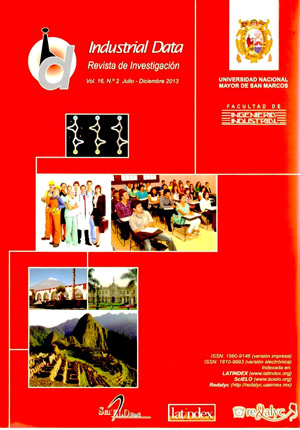Prospective design scenarios for Science, Technology and Innovation 2040
DOI:
https://doi.org/10.15381/idata.v16i2.11927Keywords:
prospective, scenes futuristic, technical futuristic cardAbstract
This research related with the design of scenes concerned with science, technology and innovation will identify the main problem as the gap that exists between Peru and LatinAmerican countries of investment in ST + I as a percentage of gross domestic product. In Peru you may see that the investments only 0.15% while in other countries, may quintuplicate and generating a gap that must be filled with plans and strategic management of science, technology and innovation. The hypothesis suggests that it is possible to design scenes for the proper management of public policies aimed at closing the differentiation of Peru with the countries of Latin America, which is the objective of the study. For the design of scenes and futuristic trends, the Delphi method will be used through choose experts will be asked about the futureof ST+ Ithen analyzed the responses to the questionnaires and prepare the desired questionnaire prospective methodology. Visualizing the gap closing scientific, technological and innovation in relation to the countries of Latin America.
Downloads
Downloads
Published
Issue
Section
License
Copyright (c) 2013 José Julio Rodríguez Figueroa

This work is licensed under a Creative Commons Attribution-NonCommercial-ShareAlike 4.0 International License.
AUTHORS RETAIN THEIR RIGHTS:
a. Authors retain their trade mark rights and patent, and also on any process or procedure described in the article.
b. Authors retain their right to share, copy, distribute, perform and publicly communicate their article (eg, to place their article in an institutional repository or publish it in a book), with an acknowledgment of its initial publication in the INDUSTRIAL DATA.
c. Authors retain theirs right to make a subsequent publication of their work, to use the article or any part thereof (eg a compilation of his papers, lecture notes, thesis, or a book), always indicating the source of publication (the originator of the work, journal, volume, number and date).






